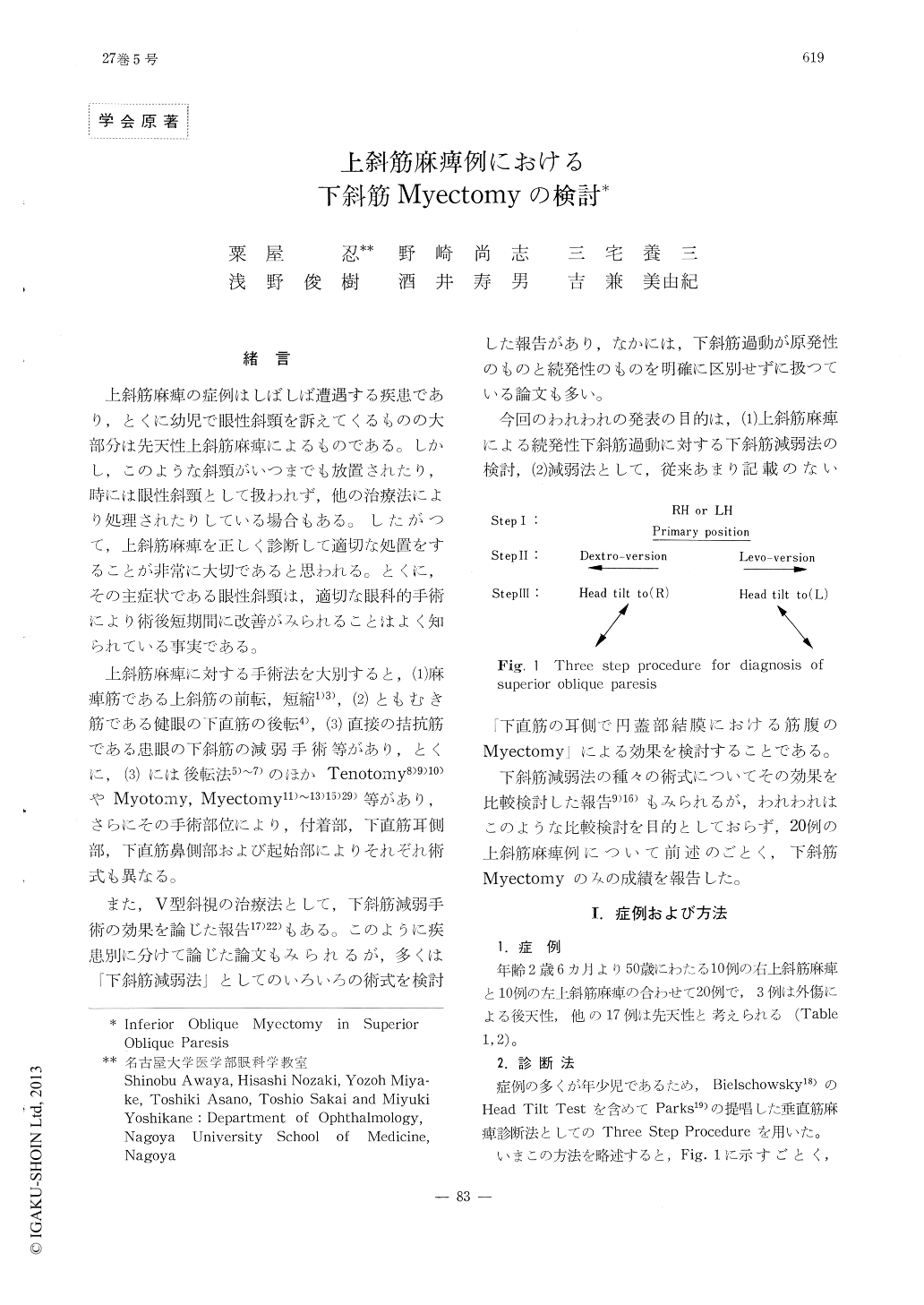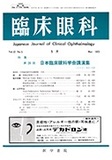Japanese
English
- 有料閲覧
- Abstract 文献概要
- 1ページ目 Look Inside
緒言
上斜筋麻痺の症例はしばしば遭遇する疾患であり,とくに幼児で眼性斜頸を訴えてくるものの大部分は先天性上斜筋麻痺によるものである。しかし,このような斜頸がいつまでも放置されたり,時には眼性斜頸として扱われず,他の治療法により処理されたりしている場合もある。したがつて,上斜筋麻痺を正しく診断して適切な処置をすることが非常に大切であると思われる。とくに,その主症状である眼性斜頸は,適切な眼科的手術により術後短期間に改善がみられることはよく知られている事実である。
上斜筋麻痺に対する手術法を大別すると,(1)麻痺筋である上斜筋の前転,短縮1)3),(2)ともむき筋である健眼の下直筋の後転4),(3)直接の拮抗筋である患眼の下斜筋の減弱手術等があり,とくに,(3)には後転法5)〜7)のほかTenotomy8)9)10)やMyotomy,Myectomy11)〜13)15)29)等があり,さらにその手術部位により,付着部,下直筋耳側部,下直筋鼻側部および起始部によりそれぞれ術式も異なる。
Twenty cases of the superior oblique paresis were studied with reference to the symptomatol-ogy and to the effect of the inferior oblique myectomy at the conjunctival fornix temporal to the inferior rectus muscle, and the following results were obtained.
1. The Three Step Procedure by Bielschowsky (1956) and Parks (1958) was quite valuable for the diagnosis of superior oblique paresis.
2. An emphasis was made on whether the overaction of the inferior oblique was primary or secondary, for discussing the effects of the weakening procedures of the overactive inferioroblique.

Copyright © 1973, Igaku-Shoin Ltd. All rights reserved.


